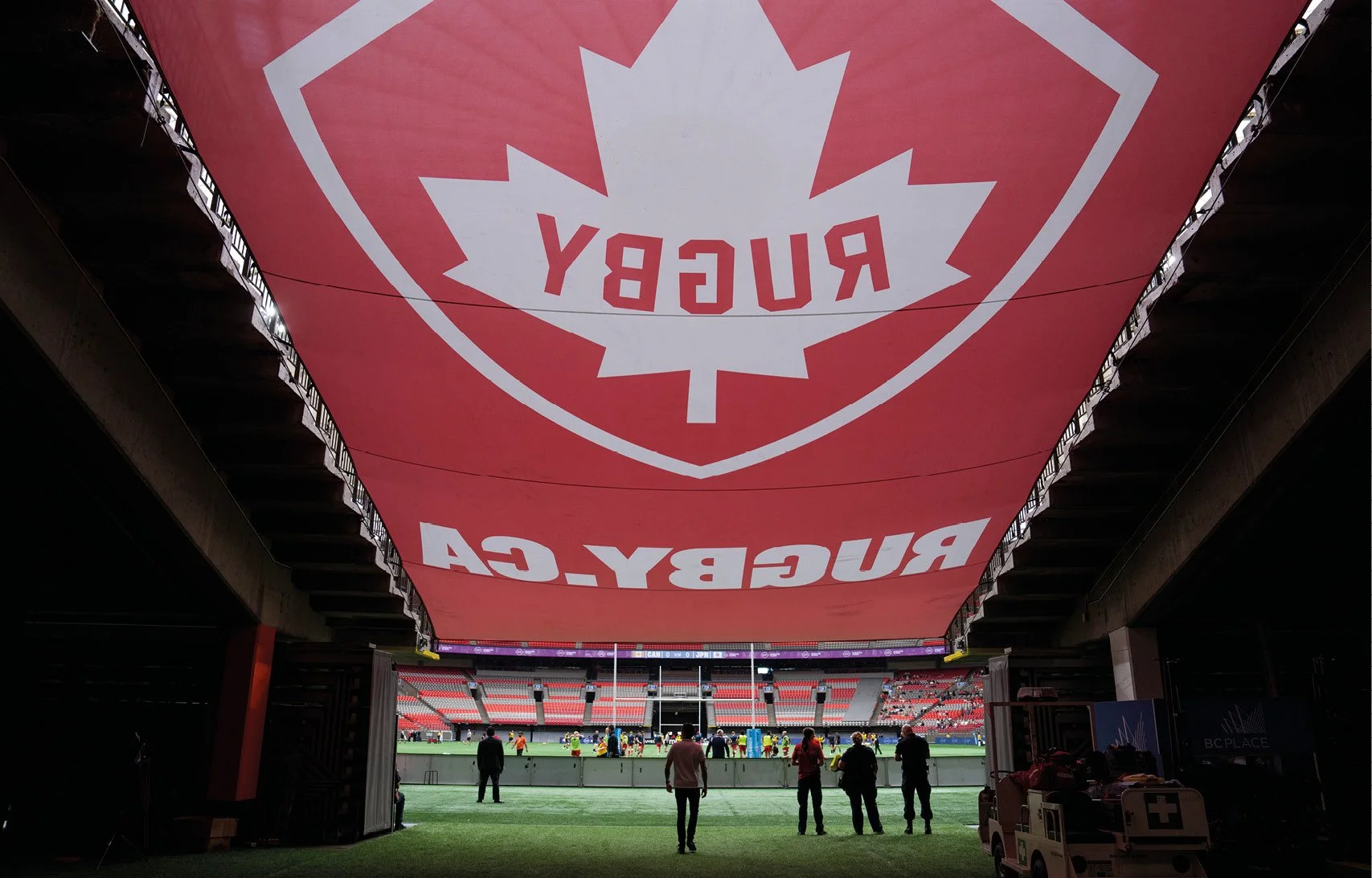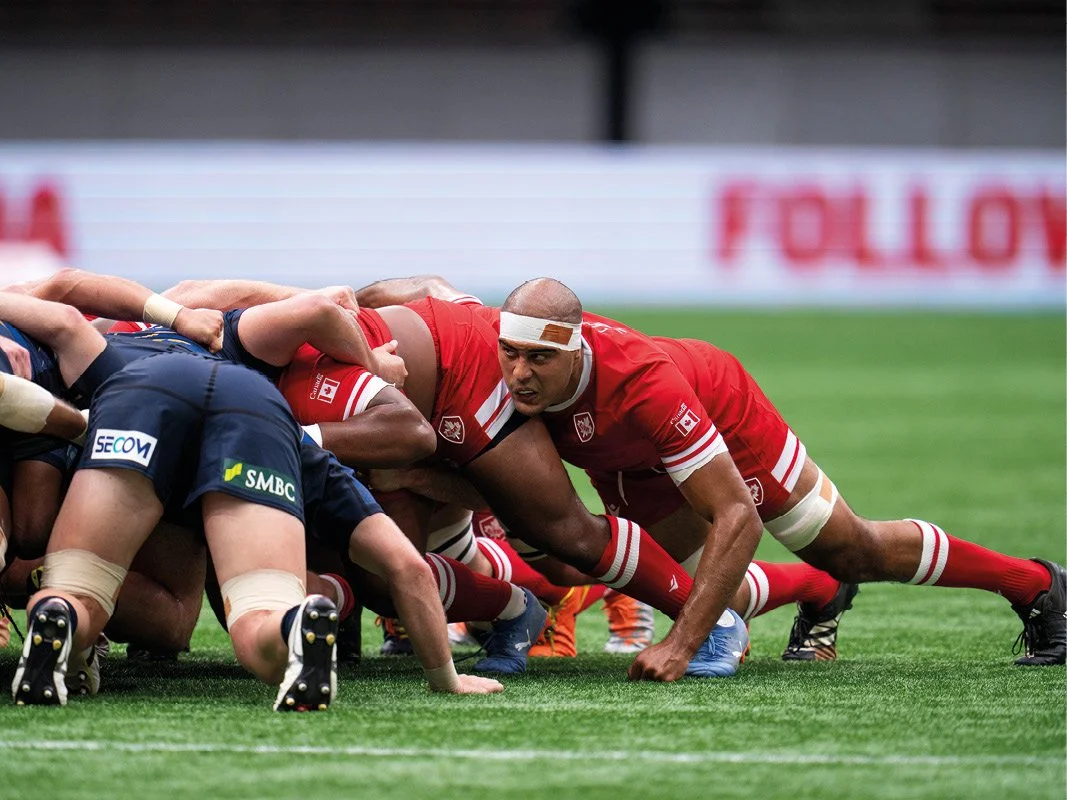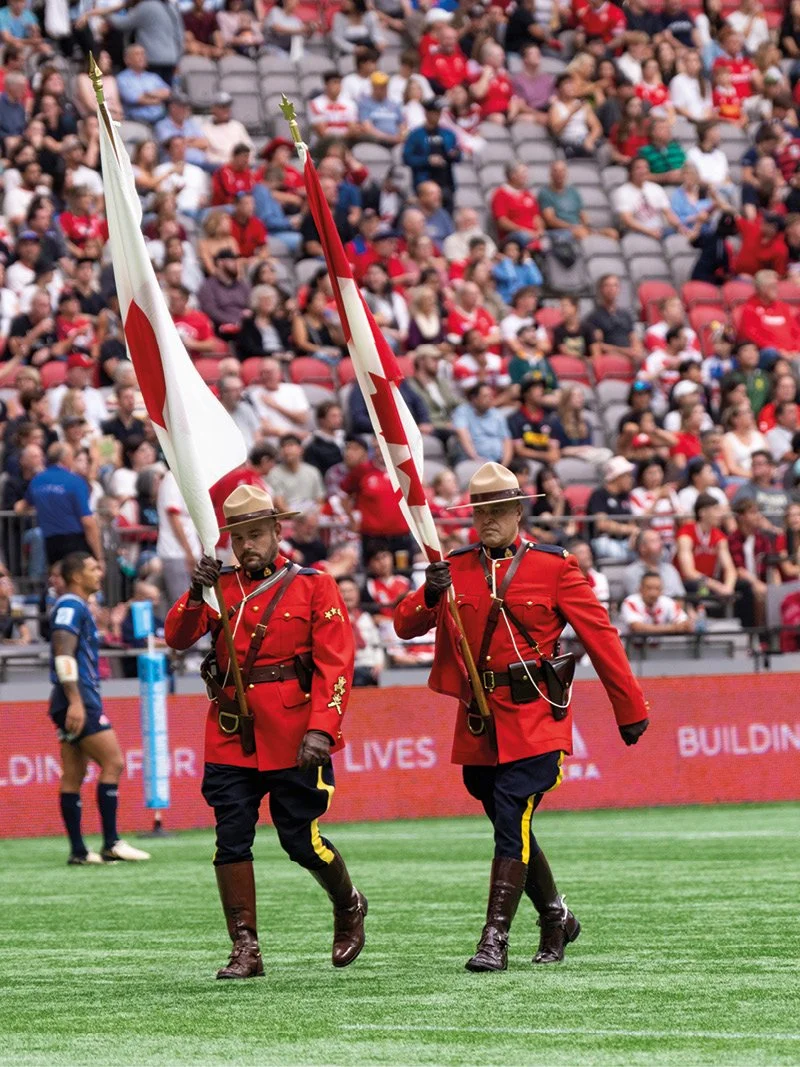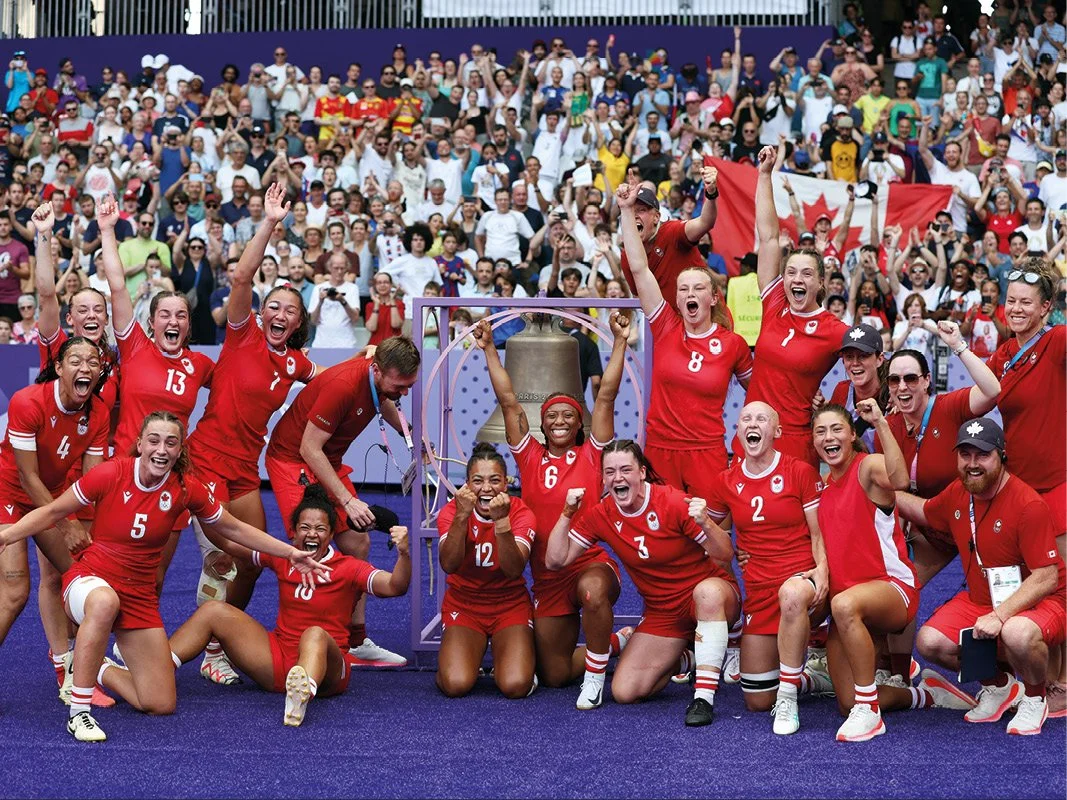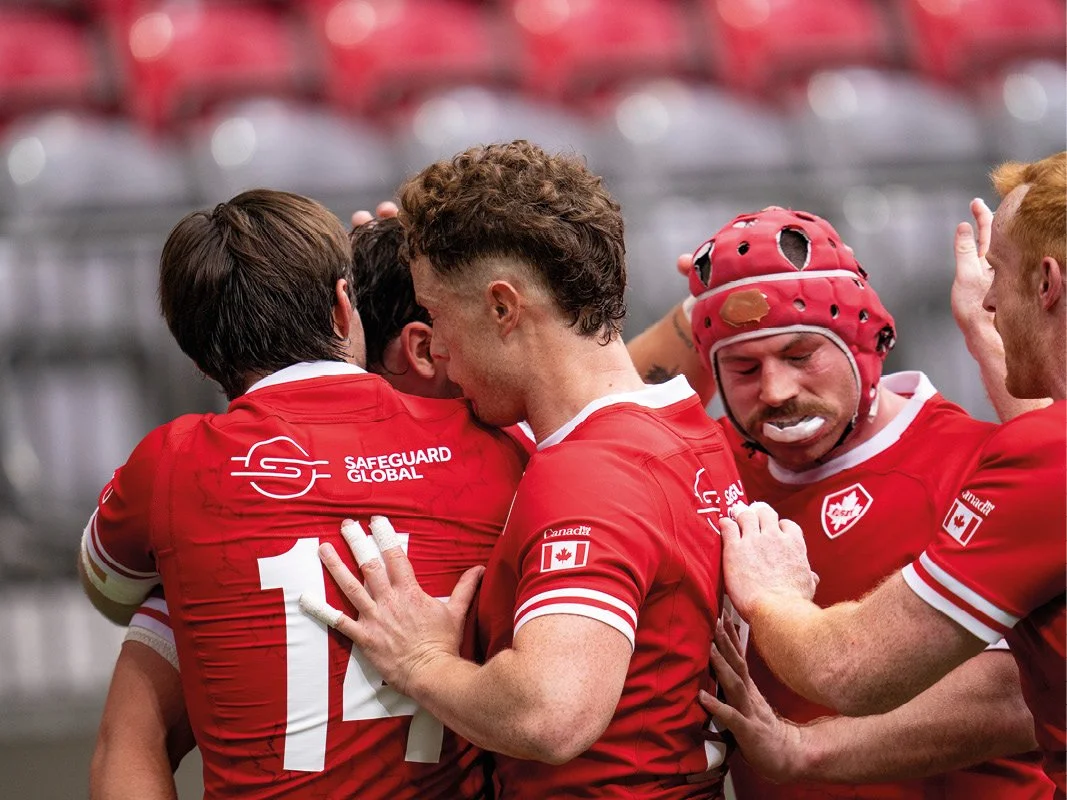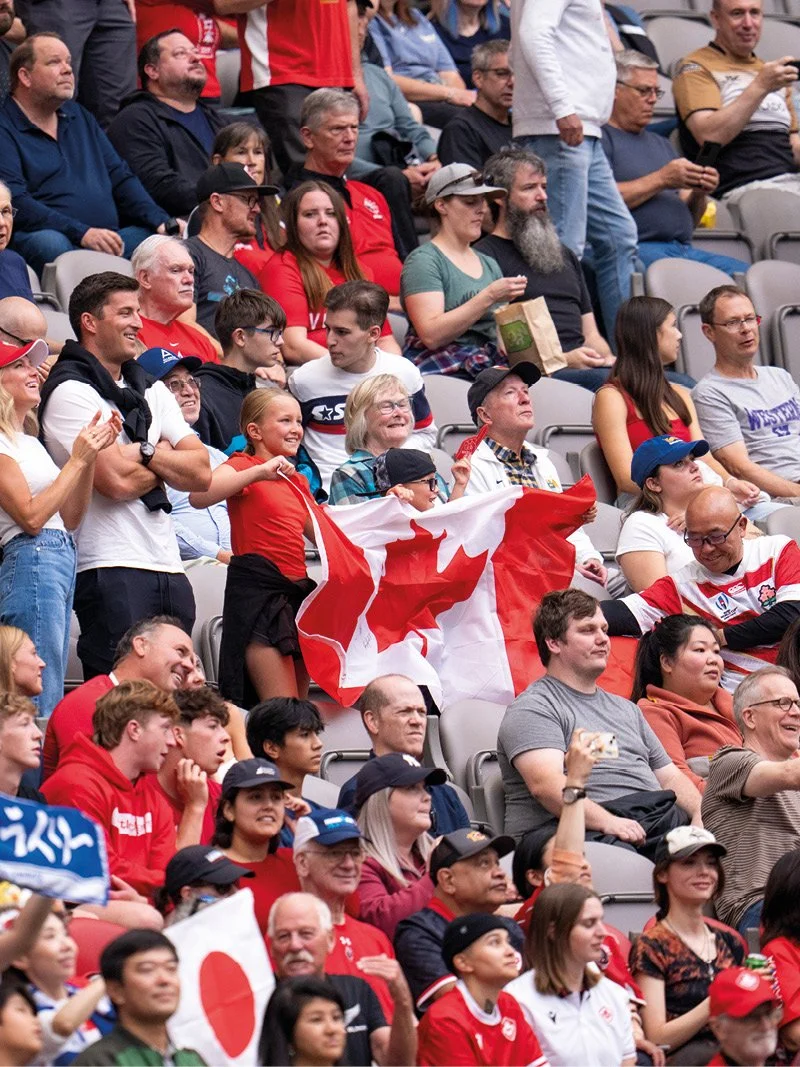Canada
Months after Canada’s men’s side failed to make it ten Rugby World Cup appearances in a row, the women’s side put the world champion Black Ferns to the sword. It summed up a tumultuous time for rugby in the country, where you just never know what might happen next.
When Canada welcomed Chile in the first leg of their 2023 World Cup qualifier in Langford, British Colombia, your money would have been firmly on the home side. In their six previous meetings dating back to 2002, Canada had comfortably won every time, their last encounter ending 56-0 in their favour in the 2019 Americas Rugby Championship. Two and a half years later, in October 2021, your bet would have been safe, but only just; Pablo Lemoine’s Chile returned to the Starlight Stadium much improved, leading with ten minutes to go before a late Robbie Povey penalty edged Canada 22-21 ahead.
In the second leg in Valparaíso a week later, that one-point lead would prove to be too slim. Just 25 minutes in and the Maple Leaves were already 13-3 behind, that deficit extended to thirteen points just after the break. Canada prop Djustice Duru-Sears saw yellow in the 58th minute, and while they rallied with captain Lucas Rumball’s try, Los Condores’ lead was unassailable, a 54-46 aggregate victory seeing them through to the final qualification tie, ending Canada’s World Cup journey.
For the first time in their history, Canada men had failed to qualify for rugby’s greatest show. The nation that had been at all nine previous editions of the World Cup, had proudly held the mantle of the best of the rest, had taken on New Zealand in front of 30,000 in a 1991 World Cup quarter-final, had long challenged at the top of the women’s game and stood on Olympic podiums, had lost to the 28th-ranked side in the world. As a result, Canada fell to 23rd in the rankings, below the likes of Hong Kong and Russia.
It was a loss that proved to be the final nail in the coffin of what had been a turbulent year for Canadian rugby.
Earlier, in April 2021, the Canada women’s sevens team had come forward to file a series of bullying complaints against their coach, John Tait, who resigned with his position deemed untenable. The team, who headed into Tokyo 2020 [held in July and August 2021] with hopes of gold after a bronze medal in Rio, saw the seams of their Olympic dreams burst apart as they plummeted to finish in ninth place. A few weeks later, Rugby Canada CEO Allen Vansen announced he would be stepping down, with the organisation set to undergo a high-performance review.
Published in March 2022, the review found the issues in Canada to be systemic in nature. “The culture of Rugby Canada and the high-performance program is described as ‘empty’ or ‘non-existent’,” said the report. “In this vacuum of culture and leadership, bad behaviours take hold across all areas of the program. The high-performance program is described as unhealthy or unsafe by many. Current players and high-performance programme alumni confess they are not proud to wear the Rugby Canada jersey.”
With Canadian rugby at its lowest ebb, a safe and steady pair of hands on the tiller was needed, and Rugby Canada found them in Nathan Bombrys, hired as their new CEO in July 2022. Born in Michigan, he joined Sale Sharks as commercial director in 2002 before spending a decade as the managing director of Glasgow Warriors. “Things were pretty low,” admits Nathan to Rugby Journal, reflecting on Canada’s situation when he arrived. “But Rugby Canada sent [the high-performance report] to me before my interview and said, ‘we’re going to publish this’. I thought it said a lot about the board in a very positive way – they weren’t afraid to do the right thing and review their organisation publicly.
“We have this amazing woman called Sally Dennis who was chair, and she’d really taken this on, and with the help of others she’s just reset the whole governance. Now we have a new board, a really skills-based, well governed board, and they were ready for a change, so they decided to bring in somebody from outside the system.
“That can be a real advantage; you have this fresh set of eyes,’ he adds. “But it can be a hinderance at times, because you didn’t experience the last ten years with everyone else.”
It had been a decade of highs and lows in Canadian rugby. In 2015, Canada’s men had failed to secure a single victory at the World Cup finals for the first time in their history, relinquishing a 15-0 lead against Romania to lose 15-17 in their last game. In the following years, while a few wins came against the likes of Brazil, Chile, Kenya, Belgium and the Netherlands, the nineties and noughties era when they could challenge the best in the world – recording wins against Argentina (twice in 1990, 2005), Wales (1993), Scotland (2002), Italy (2000) and France (1994) – was behind them. The women, on the other hand, had made it to their first World Cup final in 2014, and while they lost 21-9 to England, they have continued to cut a significant figure in the women’s game, perennially the third-ranked team in the world behind England and the Black Ferns.
After two decades of working in rugby in England and Scotland – tier one nations fuelled by a lucrative yearly Six Nations – the situation Nathan found in Canada was a snap back to the reality of the tier two game. “What I learned pretty quickly was that tier two is really hard going, tier two needs support,” he says. “A lot of the things that you hope would be there, or kind of have just taken for granted in a tier one country, just don’t exist. I knew that was coming, but when the reality smashes into your face, it’s quite different.
“The finances were like, oh my – that was a stark reality that hit me, I didn’t think it was going to be this,” he continues. “We just had to roll up our sleeves and find the basement floor as quickly as we could financially so we could figure out how we could start building this organisation back up.”
Off-field concerns were at the centre of the agenda, but Nathan quickly saw that many of the most immediate and fundamental issues Canada faced started on the field, more specifically the difficulty in getting on it in the first place. “In my first month, our women played Italy in Langford at the National Training Centre and got a good win [34-24],” remembers Nathan. “They walked off the field and said, ‘I think that’s our first home game in seven years’. And you’re like, ‘what?’.”
The problem was equally acute on the men’s side. “Last year, July 2023, Canada men’s national team had no games between that date and the end of time,” he says, still almost in disbelief. “We managed to work with Fiji and Tonga to get some games, and World Rugby supported that, and with their support we managed to have a tournament in Spain last year [La Vila International Rugby Cup, featuring Canada, USA, Spain and Brazil].”
“The calendar is a well-known rugby challenge,” he continues. “The windows are structured around Six Nations and SANZAAR, because that’s where the established professional leagues are. In North America our needs are a little different, but we’re conforming to what’s been established.”
Most recently, however, there has been some improvement in the fixture list in Canada for both the men and the women. Since 2021, Canada women have played in the annual Pacific Four Series, with themselves, USA, New Zealand and Australia competing in it as a qualifier for WXV. In 2024, Canada claimed the title after beating the Black Ferns 22-19 in Christchurch, the first win in their history over the six-time world champions.
For the men, a revamped Pacific Nations Cup, which they have been involved in sporadically over the years, sees Canada guaranteed three Test matches, one of which will be on home soil. “It’s for four years initially, and it gives us consistent, good games,” says Nathan. “At the moment, the knock-out round rotates between Japan and the United States, but maybe in the future, we could grab it for a year and get some more of it in Canada.”
Adding to the challenge of arranging games for Canada to play, there is the test of ensuring your best players can be available for those games. While many national team players are based domestically or across the border in Major League Rugby, some of their best men’s professionals are based in Europe; for the women, their best players play in England and France.
“Representing Canada is not financially lucrative,” says Nathan. As it stands, men’s and women’s internationals are paid an equal match fee per Test match, plus a per diem to cover expenses.
“The players aren’t doing it for the money, they’re doing it to represent their country. At the moment that puts a lot on the player – I’ve seen it from the other side of the coin [when at club side Glasgow Warriors], if you have an injury and need a three-month window to get it sorted, or maybe your club really wants you to be involved in a full pre-season, there’s a number of times there where the player has a choice [whether to play for their country or not], and it can be quite challenging on the player to make those choices.
“Our players are not employees; they are not contracted professionals – they have an agreement with Rugby Canada, but it’s not a central contract you might see in a Six Nations country.”
Canada and rugby date back almost 200 years, when British settlers, garrison troops and members of the Royal Navy introduced the game in the 1820s. Developed first along the west coast in Halifax, Toronto and Montreal, thanks to the work of Alfred St. George Hamersley, who’d played for England in the first ever Test match against Scotland at Raeburn Place, the game later took hold of Vancouver, which became rugby’s stronghold in Canada. After F. Barlow Cumberland and Fred A. Bethune codified the rules in 1864, a first game was played between British regiment artillery men, and soon clubs began springing up across Canada, notably the likes of Montreal FC (1868), Halifax FC (1870), Winnipeg FC (1879) and Vancouver RFC (1889).
The game came under the control of the provincial unions when English and American forms of football split in 1882, and after a dip in popularity during World War I, and another in World War II, the game found its feet again in the following decades, with Rugby Canada incorporated in 1974. While British immigrants and military personnel initially fostered rugby’s development, the game was being driven forward by the regular touring sides that travelled to and from Canada. Teams from France, New Zealand, Wales and Australia all toured the country, exposing Canadians to the world’s best players.
Gareth Rees, former Canadian fly-half, captain and veteran of four World Cups with Canada, remembers the touring sides he used to play against growing up in Vancouver Island. “As a youngster coming through, for four years in a row when I was there, I played against the English club champions, whether it was Bath, Leicester, Wasps, they all toured at the end of season,” he recalls. “I was playing literally the best teams in the world. When a national team would tour, you’d have two or three provincial games, maybe an under-23 game, and then a Test match. Those kinds of structure were quite important for some of that early development.
“In 1989, British Colombia had their centenary year, and in one season our provincial side played the full Welsh Test side, full Japanese Test side, Australia, the All Blacks, Ireland. They all toured on invitation, and as a young player I was out on the field against the best in the world. If I wanted to learn my trade and see what the best in the world were doing, I could do it on home soil.”
It was in this environment that Canada saw the emergence of a golden generation of players, the likes of Gareth, Al Charron, Norm Hadley, John Hutchinson, Scott Stewart and Rod Snow, who would star in their 1991 and 1995 World Cup campaigns. However, things changed after professionalism. “The biggest thing for me is that when professionalism came in, Canada became isolated in a rugby sense,” continues Gareth. “It was still functioning, we still had clubs, but in terms of contact with the top of the game, mainly touring sides, we became isolated. We don’t often talk about that as much as the impact I think it had.”
In the few years before the 1995 World Cup, Canada had welcomed an England XV, France, Australia and Wales to their shores, while also playing New Zealand and Fiji on their turf. Come 1996, Canada were competing in the Pacific Rim Championship against the likes of Hong Kong, Uruguay and Japan. Canada continued to play some top internationals sides in the early years of professionalism, but as time has gone on, those games have become few and far between. With fewer opportunities at home, professionalism drove players abroad, mainly to take up contracts in the UK, breaking down the formula that had seen the 1991 side make inroads in international rugby.
“[The 1991 side] had a shared experience,” Gareth says. “They’d grown up playing with and against each other [23 of the 26 World Cup squad members were born in or played their club rugby in British Columbia], touring the world together and taking it on the chin on a lot of occasions. There was not only an understanding of each other, but also an investment in the jersey. No one was getting rich, but we spent a lot of time on the road.
“When you concede forty points to a New Zealand provincial team in your Canadian jersey, you’re going to put that in the bank and draw upon it when you play a Test match. It was a special group of athletes, some hard men who could stand toe-to-toe with anyone.
“It’s sort of become a high point, sadly,” he adds. “I’m the first one to say let’s stop talking about ‘91.”
Without top-level competition, Canada men has struggled to develop players prepared for the international level; the likes of DTH Van Der Merwe, Jamie Cudmore and Mike James, who all spent their careers in Europe, are proof that good competition is needed to breed the best. The playing numbers are there in Canada, with over 40,000 registered players and, including players at school and university, an estimated total of 70,000 rugby participants, but converting them from youth players into professional senior athletes has long been a sticking point.
As a consequence, rather than assessing the system, much of the ire from the Canadian rugby public has been directed towards Kingsley Jones, Canada head coach since 2017, who despite his team failing to qualify for the 2023 World Cup, was offered a two-year extension on his contract. However, Gareth assures us this criticism is misguided. “I understand the criticism completely, no one’s more disappointed that we didn’t go to a World Cup than me, but it’s an ill-informed criticism. When he gets two or three weeks to prepare a team, that’s not how you play professional rugby. There’s still a large body of our public that think you can play for your local club side in Toronto or Vancouver, you play for your provincial side, and then you put on that Canada jersey and then say, ‘go get ’em boys’. That’s just not the way things have been for a long time. If you’re not getting fed athletes with the skill set where they can deal with the pace of international rugby, then you’re going to get the results we’ve got.”
Now working on the administrative side of Rugby Canada as a director and strategic relations lead, Gareth is part of the team looking for a solution to this: namely developing domestic professional rugby in Canada. Since Canada’s lone MLR team, the Toronto Arrows, ceased operations at the end of 2023, there are no fully professional domestic opportunities for rugby players in Canada. The closest thing to it is Pacific Pride, a centralised development programme run by Rugby Canada at their high-performance centre in Langford. It’s a professional environment, and has been hugely successful as a pathway to professional rugby – in fact, it’s the largest single source of players to the MLR – however it’s not professional in terms of remuneration.
The highest level of domestic rugby varies from province to province; in British Columbia for example, there’s the BC Premier League. Nationally, there is a Canadian U19 Rugby Championships for both women’s and men’s players, featuring provincial teams, as well as university competitions for both too. “We don’t have the revenue right now on the men’s 15 side to fund their full-time contracts for a year, so the MLR has been hugely valuable,” continues Gareth. “On the women’s side, they’re all playing at the highest level, in the UK or France. But my fear is if for any reason those leagues closed up to Canadian players, that would impact our development.
“We need some more rugby domestically in Canada,” adds Nathan. “Our players are saying, ‘look, we don’t expect to earn a lot of money playing rugby in Canada, but we would like to have the opportunity to play in Canada, to not have to go overseas’.
“We’re very fortunate to have a high-performance centre in Langford, but our players need something across other cities in Canada; not everyone can displace their life and be in Vancouver Island.” Rugby Canada are actively looking for partners in other cities to provide those centres, with an aim to establish four, at least.
In terms of professional domestic competition, Canada are exploring their options, and an MLR side is one possibility. “Going back a few World Cups, the French league was dominated by overseas players and the French national team was struggling. There were key positions where first choice French players were not playing every week in the Top 14. However, when you have alignment like Ireland do, they can ensure that there’s Irish players in all those key positions playing week in week out in the URC. The MLR is a separate entity currently, so we’re open-minded. The answer could be another MLR team, it could be something else.”
Standing tall during the difficult times in Canadian rugby, for many years, have been the women’s programmes. Resolutely among the best in the world in fifteens, the sevens game has been at the centre of Canada’s success of recent times, and they claimed a silver medal at the Paris Olympics. “We look back at the final now like, we could have actually won that one,” reflects Jocelyn Barrieau, the new head coach of the sevens programme, who was assistant under Jack Hanratty during the Olympics. Canada had led 12-7 at half time until the reigning champions New Zealand fought back, with tries from Michaela Blyde and Stacey Waaka breaking Canadian hearts.
“People still talk about the legacy of the 2016 team from Rio,” continues Jocelyn. “The biggest challenge for this team is to take that and honour it by continuing to uphold that legacy and not rest on it. The Olympics is a life-changing experience, and then it’s like, ‘oh, we’re training again, we’re back in the environment’. But I think the ripples will be felt.”
With the Canadian women reaching ever greater heights in both sevens and fifteens, what has been the key to their success? “I try not to compare us to the men because we have such different realities,” she continues. “Our situations are so different, our pathways are so different. The men, for example, have an insane amount of competition from other sports, American football being a huge draw on this continent, not to mention hockey.
“One thing on the women’s side that I can speak to is that the crossover athlete factor is huge in the women’s game. A young girl might be really athletic but sometimes at twelve or thirteen they’re told, ‘gymnastics is over for you, because you’re not going to be in the five best gymnasts in this country’, and some of those have found this game.”
While Canada have had great success across both women’s programmes for more than a decade, the two [sevens and fifteens] have now been brought closer together since Rugby Canada’s overhaul two years ago. It’s driven by their new ‘one squad’ ethos, the title of the union’s 2024-2027 strategy, that looks to utilise resources across the programmes. For Jocelyn, it has been a welcome change.
“I would go as far as to say that before there was tension between the two programmes,” she reveals. “Certain players weren’t allowed to go back and forth. We can’t put players in a box, we need to allow them to continue to develop. I’m from the province of Quebec, it’s how we ran our provincial programme for years. It’s all I’ve ever known to be successful, resourceful and getting the best out of one another. As coaches we’re moving between programmes all time – Kevin Rouet, Ian Monahan and myself, we’ll all be dipping into sevens and fifteens, but obviously, sevens is my priority.”
Part of that new strategy has been to designate sevens as a development tool for fifteens, with the commercial driver of the fifteens World Cup seeing efforts focused more on that side of the game. “At the end of the day, it’s not solely [a development tool], we have goals and aims and visions and things we need to accomplish. So while that is the direction of Rugby Canada, I see that as a wonderful challenge. It’s actually the perfect time to get a ton of exposure for a lot of players.”
With the conclusion of the Olympics, attention swiftly turned to the 2025 World Cup, in which Canada are desperate to take that one, crucial final step. It’s been ten years since they lost to England in the 2014 final, and while strides have been made, the side have still been limited by the resources available. “Before the [2021] World Cup, the team were billeting in Nova Scotia to get extra time together,” says Nathan. “It was the best of rugby in a way, but it was also the worst of rugby; that was a women’s national team, ranked third in the world, and they’re in this position where they’re having to billet in Nova Scotia to get an extra week or two together to train and prepare.
“They did brilliantly in that World Cup, ran England close in that semi-final [eventually losing 19-26], but after that they literally didn’t have any games.”
The women will need to be properly funded if they are to fulfil their long-awaited World Cup success, but the costs of doing so are a particular strain for Canada.
“We have a lot of expenses to fund if we want to support the women,” says Gareth. “If we want to do this properly, we’re talking about $50-60,000 worth of flights just to have a squad session – it’s not as easy as heading down to the Lensbury [the London venue where England’s women often train]. We have two plans – the fully funded plan that we’d like to do, where there’ll be optimum preparation, and then we have another plan, if we don’t get all the funds we need in place.
“What I see in them that I saw in that group from the early 90s, is there’s a commitment to the jersey that is exceptional. They will sleep on coaches, get to places on their own dime, they’re very committed to winning for Canada, which is a pretty good starting place.”
“Of course, the dream goal is to win the World Cup,” adds Jocelyn, “but the goal is also for it to stop being so shocking that we’re doing well. Every time we beat a ‘rugby nation’ [such as the Black Ferns], it’s shocking that Canada wins. It surprises me that people are still shocked. I find it funny how quickly we get removed from the consciousness of the rugby world.
“People haven’t realised that we’re actually here to stay, and we’re very much members at the table who are part of pushing the boundaries of this sport.”
Story by James Price
Pictures by Jimmy Jeong & Getty Images
This extract was taken from issue 27 of Rugby.
To order the print journal, click here.

